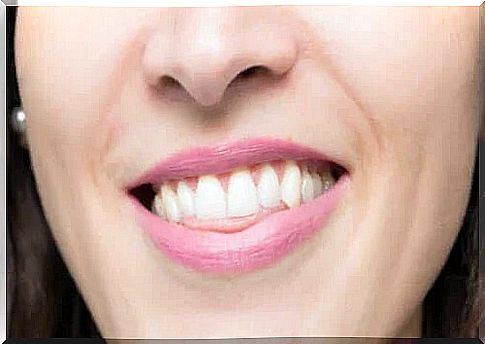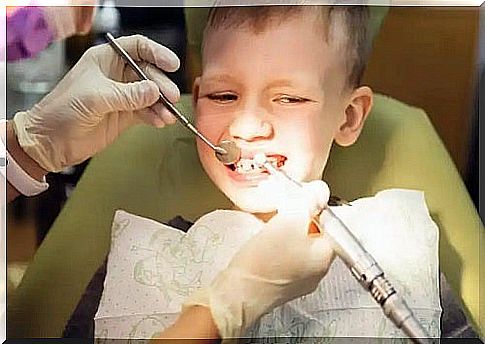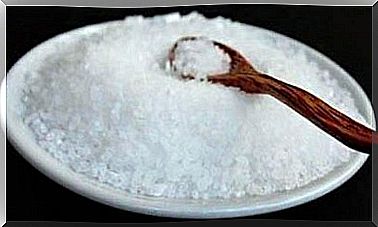What Is An Open Bite And How To Correct It?

Open bite is a very common dental problem. In addition to the aesthetic aspect that characterizes it, it can change the oral health and quality of life of the affected person.
In any case, it is easy to diagnose and can be easily solved. In this article, we will explain what this mouth condition is and the methods that exist to correct it.
What is an open bite?
Open bite is a type of malocclusion that occurs when the upper teeth fail to come into contact with the corresponding lower teeth. This inability causes a visible space to appear between the arches.
It is most commonly seen in the anterior area of the mouth when there is no contact between the canines and the upper and lower incisors. However, it can occur in any sector of the oral cavity, even in the molars.
As already mentioned, the main symptom of this condition is the visible space between the upper and lower teeth. This creates an aesthetic inconvenience, especially if the condition occurs in the previous sector, because the smile is irregular.
Beyond the physical problem, the open bite can cause other health problems. Below, we will mention just a few of them:

Types of open bite
CAUSE
Currently, open bite is considered a multicausal disorder influenced by genetic, hereditary and functional factors, which modifies teeth and bones and determines the way they bite.
Most often, open bite occurs in the anterior sector and is a consequence of repetitive habits during childhood. During this period of formation of the facial bones, any excessive and continuous stimulus can lead to a malformation and malposition of the teeth.
These repetitive behaviors include excessive and prolonged use of the pacifier, sucking fingers, sucking or biting objects, breathing in the mouth, atypical swallowing, and pushing the tongue against the teeth when speaking, swallowing, or resting.
As I said, although less common, there are also open skeletal bites of genetic and hereditary origin. There are whole families with “long faces”, with an excessive vertical development of the face. Our genetic code contains information for the formation of facial bones. A change in this level can influence the shape of the bone tissue we use to bite.
In many cases, open bites result from a combination of several factors. It happens that the patient has a genetic predisposition and the situation is aggravated by the presence of acquired habits that allow the development of open bite.
Treatment of open bite
There are occasional cases of open bites that resolve when baby teeth fall out. However, others persist into adulthood. This often happens when the patient prolongs the predisposing habits until after the eruption of permanent teeth.
What you need to know is that there are different alternatives to solve this problem. The treatment can be performed at any age. Its early application improves the prognosis and prevents the problem from worsening.
Treatment will depend on the complexity of the malocclusion and the age of the patient. The responsible dentist will perform additional tests to arrive at a correct diagnosis of open bite. Only then will he choose the best option for the patient.
As already mentioned, many factors influence this condition. You need to consider them when you start treatment. Ignoring functional problems or acquired habits and not resolving them can lead to therapeutic failure.
The orthodontist and the speech therapist must carry out their activity in an interdisciplinary way. They will help eradicate harmful habits and improve the correct pronunciation and positioning of the language in pronunciation.
At this age, the bones have already completed their development, so they are less malleable. The main objective is to change the position of the dental elements. Therefore, the solutions for these ages are braces.
These are traditional devices that allow a quick tooth correction. The patient can choose between metal, sapphire or lingual devices. Their disadvantage is visibility, which can be an aesthetic issue.
Transparent braces are computer-created plates that the patient must change on a regular basis. They are more discreet from an aesthetic point of view.
In some cases, it may be necessary to combine orthodontic treatment with tooth extractions to harmonize the bite.
In adults with severe open skeletal bite, maxillofacial surgery may be required. Medical experts remove excess bone from the upper or lower jaw.
Before and after the operation, dentists complete the treatment with orthodontics. These treatments last for several years. The consequence is a radical transformation of the patient’s face. Dentists choose this option only in cases where orthodontics can not get enough results.

How to prevent open bites?
There are causes of open bite that we cannot control, such as hereditary and genetic factors or the absence of a dental element. But you will need to focus on your childhood habits to avoid this malocclusion.
Parents should be aware of these bad habits. If the little one sucks his thumbs, bites objects, uses the pacifier for a long time, breathes in his mouth or pushes his teeth with his tongue, walking to the orthodontist in time will be very helpful.
Early and frequent dental consultations will also help prevent this condition. The doctor will evaluate the child’s development and occlusion. If necessary, he will make the appropriate referral to the orthodontist. Early diagnosis simplifies treatments, making them less painful, faster and less expensive.
Now you know that open bites are pretty common. In addition to the aesthetic impact, it can affect patients’ quality of life in many ways.
Depending on age and severity, there are several treatment alternatives to correct it. Treatment should start as early as possible to be simpler and less painful. Ask your dentist to treat your open bite to have a happy smile!









